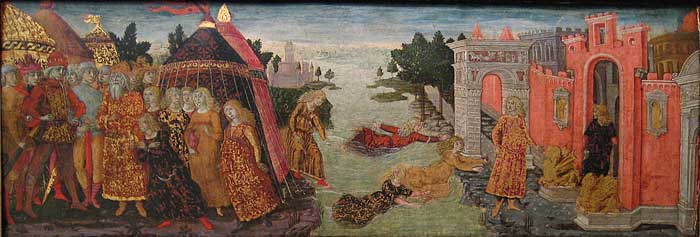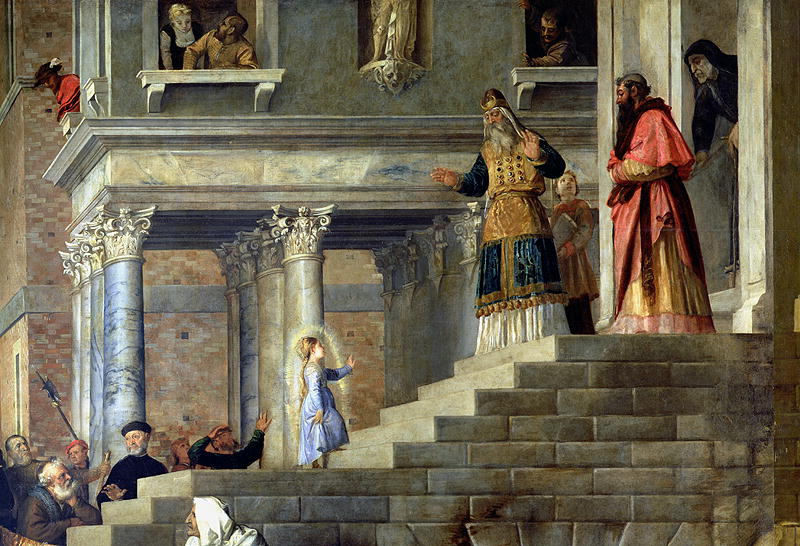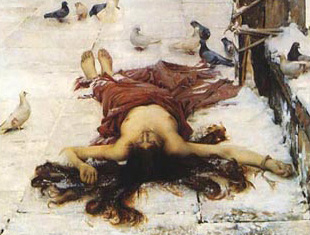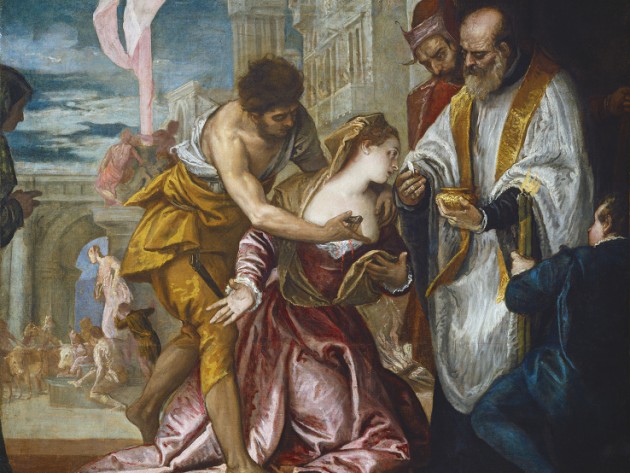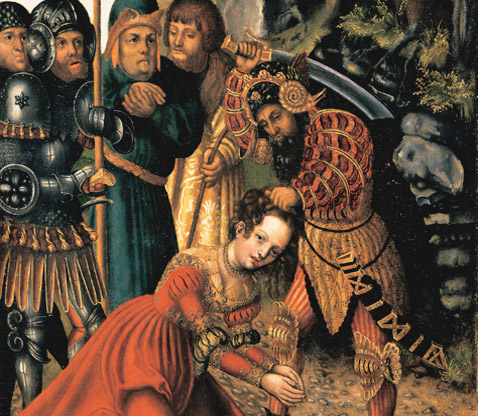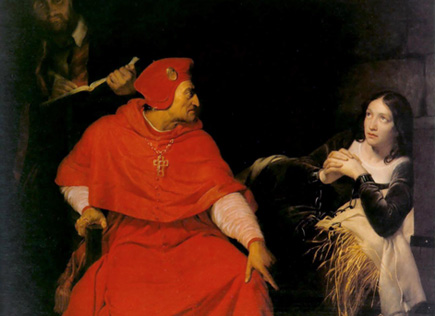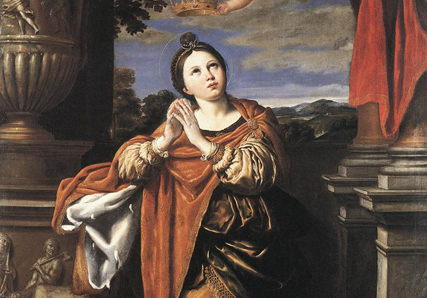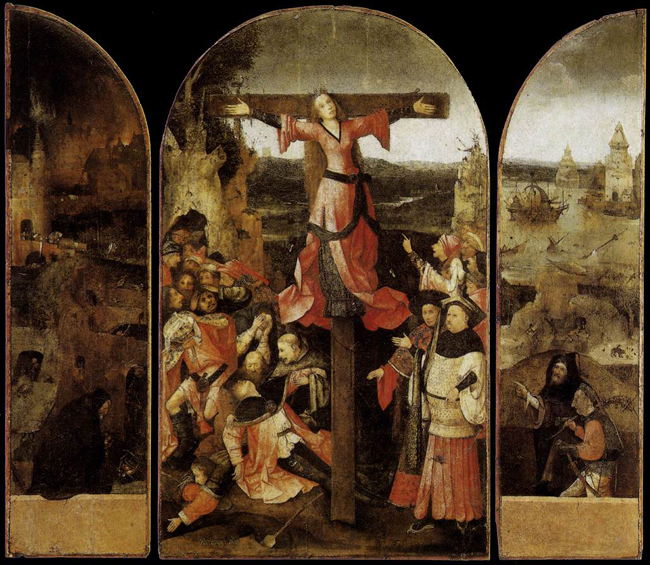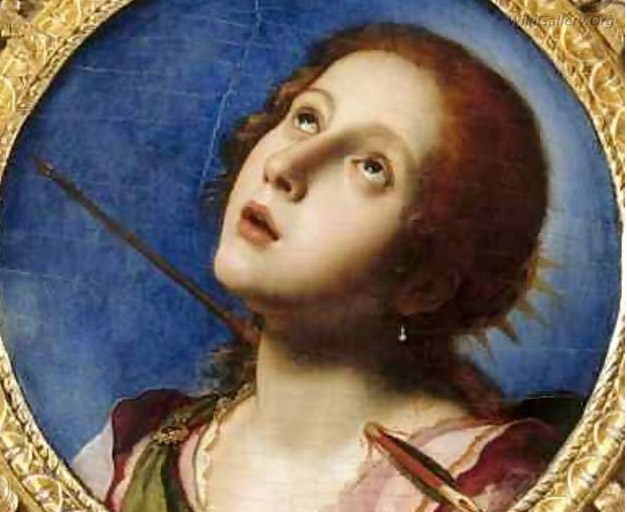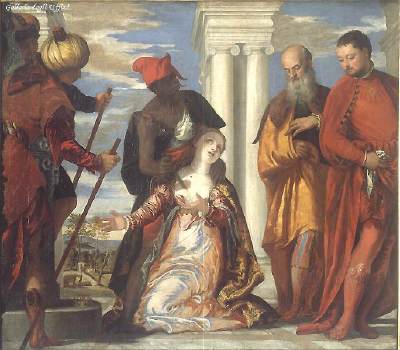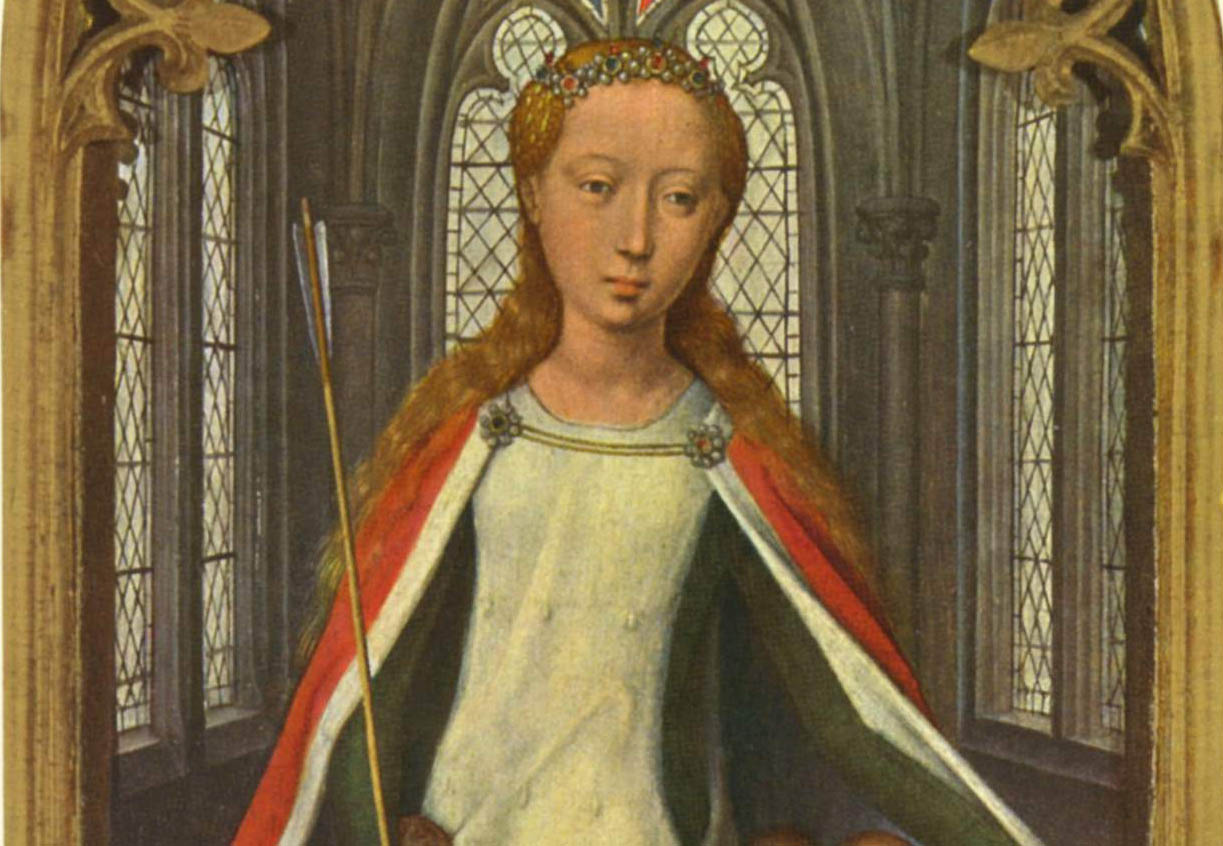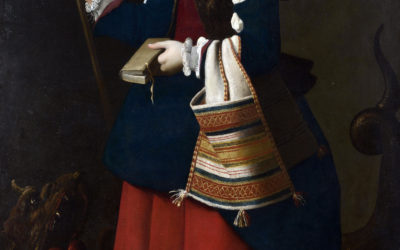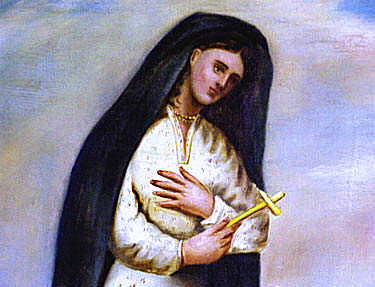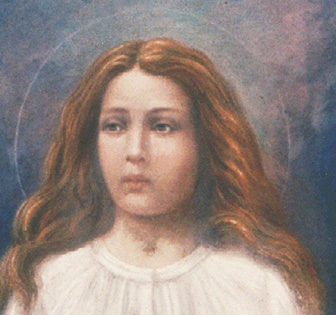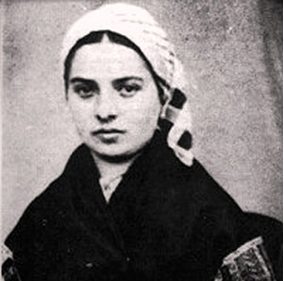 Representations of girls being tortured and killed, whether for religious or political reasons, is not a celebration. However, the destruction of girlhood is a strong theme throughout human history, with intentions ranging from forgiveness to peace on earth. This might seem pretty harsh from a contemporary perspective, but this sort of behavior carries on today. Regardless of personal beliefs, do the messages justify the images?
Representations of girls being tortured and killed, whether for religious or political reasons, is not a celebration. However, the destruction of girlhood is a strong theme throughout human history, with intentions ranging from forgiveness to peace on earth. This might seem pretty harsh from a contemporary perspective, but this sort of behavior carries on today. Regardless of personal beliefs, do the messages justify the images?
Examine the pictures of sixteen girl saints, their lives and deaths and decide for yourself.
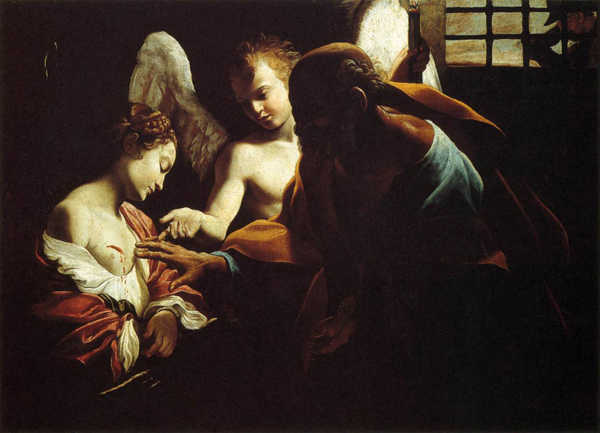
What is a Saint?
For most of the girl saints, the defense of their faith is inextricably bound up in the asserted control of their sexuality; consequently the debasement of their bodies is part of their torture. Sexual mutilation does not feature in any of the accounts of male saints.
The brutality of their treatment in some of these images are so graphic that, even to contemporary desensitized eyes, they could amount to religious pornography. What is the purpose of such images and how does this message relate to the time and culture within which it was created?
There is also typically a total disregard for their youth. It is the Hollywood equivalent of having 20+ year olds play teenagers. It seems more tolerable to see a young woman in a tragic or heroic situation, rather than a girl.
Are these stories true? What do such stories tell us about self-sacrifice and the societies in which these girls lived? Explore the lives of girl saints and their representations with us to find out.
Past/Present/Future
Most of the saints in this exhibit were canonized for notably specific reasons. Of course, all saints were committed to Christian principles against enormous odds; canonization celebrates people of integrity whose devotion to God mattered more to them than social pressure or self-preservation.
But the canonization of girl saints has depended on some unique assumptions. Girls have traditionally been valued for their representation of lack or absence: silence, not speech; passivity, not action; simplicity, not complexity; purity, not corruption. Many girls in this exhibit were canonized not for socially relevant actions, but for being victims of rape, mutilation, and murder.
Saint Agatha, for example, whose refusal to marry–at the age of twelve–got her imprisoned in a brothel where she was raped and had her breasts cut off, among other tortures, before she was killed. Art history has “honored” Agatha through images that show her carrying her own severed breasts on a platter.
We’re told that God loves the innocent because they embody His goodness and His wish for humankind to be good. But humans–lacking God’s perfection–have more complicated reasons. For centuries, we have perversely found the innocence of female youth most symbolically intriguing when it undergoes grisly destruction.
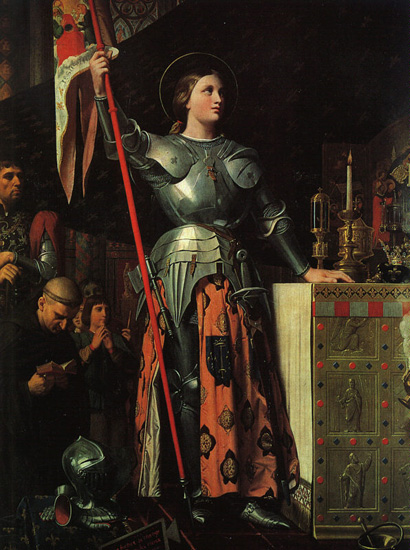
Joan at the coronation of Charles VII, Jean Auguste Dominique Ingres, 1854, Oil on canvas, Louvre Museum, Paris, WikiCommons.
While there are thousands of saints in the Catholic canon, the ones whose names are famous are fewer in number; they include Joan of Arc, whom God told to lead France’s army against England in the 15th century. Even Joan’s story traffics in the assumptions of purity and innocence that attach to female youth more than to other people: if a male “John of Arc” had been told by God to lead an army, he likely would not have inspired the suspicion and outrage that led Joan to be imprisoned, tried, and executed as a sorceress.
But Joan was not merely a victim; she was a brave soldier who changed the world through her devotion. In the twentieth century, as women’s social freedoms and powers increased, Joan’s story acquired extra resonance. Coincidentally, she was canonized only in 1920–the same year when American women got the right to vote. Over the last hundred years Joan has appeared in novels, plays, films, and television programs that celebrate her strength of body and character alongside her martyrdom.
One recent revival of Joan’s image came in the American television series Joan of Arcadia (2003-2005), about a high-school girl who converses with God. Visiting Joan in various guises, God blesses and burdens her with carrying out His tasks for the betterment of humankind. Deprived of explanations, Joan must act on faith alone, taking considerable risks: she must make a public spectacle of herself, meddle where she is unwelcome, and–like her French forebear–struggle against accusations that she is mentally compromised. She is accused, not of sorcery, but of its modern counterpart: insanity. The series still uses ancient assumptions of girls’ “lack”–Joan is not particularly bright or talented–but it celebrates her faith and her power to do good without sexualizing or degrading her.
Even the critically acclaimed series Buffy the Vampire Slayer (1997-2003), which seemingly says nothing about God or religion, portrays a teenage girl who is “chosen” to save the world; after sacrificing her life in the battle of good and evil, she is resurrected from the dead to keep fighting. At no point is Buffy successfully sexualized against her will, to serve either the brutality of her enemies or the fetishistic voyeurism of her audience.
Today, we still like our stories of girl martyrs, but we have more diversity in how we imagine them. Tales of their victimhood are sometimes, now, counter-balanced by tales of girls’ strength, integrity, selflessness, and unwavering dedication. What form will the image of the Girl Saint take next?
Dr. Ilana Nash
Associate Professor
Department of Gender and Women’s Studies
Western Michigan University
Cloelia the Hostage
Although the details widely differ in the several versions of Cloelia’s legend, the core narrative about this heroic girl remains consistent. In the 6th c. BCE, Cloelia was part of a group of hostages given by Rome to the Etruscan king Lars Porsena. The group of ten young noblemen and ten maidens was intended to secure a peace treaty. Girls and women throughout history have been used as collateral to secure political and social alliances.
Little Virgin Mary
According to Christian theology, Mary was visited by the Archangel Gabriel, who told her that she was pregnant with the son of God. Mary was only fourteen at the time and recently betrothed to Joseph. They continued with their marriage and, while pregnant, relocated to Bethlehem — where Jesus was born.
Unlucky 13 Eulalia
Eulalia lived around 300 CE and is one of the youngest saints. At only twelve, she was martyred in Barcelona, Spain, for refusing to recant her Christianity and make offerings to the pagan gods. It is said that she suffered thirteen different tortures‚ including having her body torn with iron hooks, torches applied to her breasts and sides, and suffocation as her hair caught fire.
Blinded by the Light Lucy
During a trip to the tomb of Saint Agatha, Lucy saw a vision of St. Agatha and her mother’s longstanding illness was miraculously cured. Her mother converted to Christianity and agreed to end her marriage, but Lucy’s bridegroom was displeased. He denounced her to the Roman governor as a Christian, at a time when being a Christian which was a crime punishable by death. When Lucy refused to become a Pagan, she was sentenced to forced prostitution and, later, to death.
Towering Barbara
Barbara was the daughter of a wealthy man named Dioscorus, who kept her locked in a tower to keep her away from avid suitors — a popular motif in many morality tales. As a symbol of the Holy Trinity, Barbara had three windows added to her bathhouse, revealing to her father that she had become a Christian.
Joan the Farm Girl
Joan was a peasant farmer’s daughter from eastern France. The third of five children, Joan grew up with no education other than religion. From a young age, Joan heard the voices of saints, including St. Margaret. The saints ordered her to lead the French resistance to the English invasion in the Hundred Years War and assist the King of France in regaining his kingdom.
Agnes the Sacrificial Lamb
At the age of thirteen, Agnes refused to marry the Governor of Rome in favor of a life of chastity, purity, and devotion to God. In retaliation, he ordered that she be dragged through the streets, naked, to a brothel. On the way, she prayed and her hair grew long, shielding her nakedness.
Unencumbered Liberata
Liberata was one of the King of Lusitania’s (now Portugal) nine daughters. Her father wished her to marry the King of Sicily, but she declared that she had privately taken a vow of celibacy. She prayed on the eve of her wedding to be freed of the marriage. In answer to her prayers, she sprouted a luxuriant beard. Horrified by her appearance, her suitor departed. In anger, her father had Liberata crucified.
Agatha’s Brutal Fate
Agatha lived around 250 CE. Her story shares similarities with that of Saint Lucy, as she refused many offers of marriage and instead chose to devote herself to God. But when Agatha denied her hand to Quintian, a Roman prefect, he had her imprisoned in a brothel, tortured and eventually put to death.
Golden Girl Christina
When Christina converted to Christianity, she distributed the idols among the poor and the needy. Furious, her father imprisoned and tortured her. Being thrown in a pit of snakes, shot with arrows, burned, and thrown into a lake with a millstone around her neck were just some of the fates she is said to have suffered.
Mysterious Justine
Not much is known of Justine (or Justina), the patron saint of Padua. Medieval histories describe her as a follower of Saint Peter the Apostle, though her life around 300 CE makes this improbable.
Ursula’s Maiden Voyage
According to legend, Ursula was the daughter of a British Christian King who lived sometime between 238 and 450 CE. She embarked on a voyage across the North Sea along with 10,000 maidens and ladies in waiting. On their way, Ursula decided to take a pilgrimage to Rome. They were attacked by the Huns in Cologne after Ursula refused to marry their chief, and everyone was beheaded.
Margaret’s Labor of Love
Margaret of Antioch was born the daughter of a pagan priest at the end of the 3rd century CE. She became a shepherdess after her father banished her from his home upon learning that she had converted to Christianity. Olybrius, the Roman Governor, proposed to marry Margaret if she renounced her faith. She refused and was imprisoned and tortured.
Lovely Kateri of the Mohawks
Kateri, or Lily of the Mohawks, is the patron saint of the environment and ecology. She was canonized by Pope Benedict XVI in October 2012, the first Native American woman to be given this honor.
Preteen Victim Maria
Maria Goretti is the youngest officially recognized Roman Catholic saint. She was just eleven years old in 1902 when her neighbor, Alessandro Serenelli, attacked her with intent to sexually abuse her.
Virginal Visionary Bernadette
Although quite a sickly child, at fourteen years old, Bernadette began experiencing visions of the Virgin Mary in a cave above the banks of the Gave River near her home.
Learn more
For activities related to this exhibition, for use at home and in classrooms, download our Girl Saints Education Guide. This guide is aligned to US and UK educational standards.

